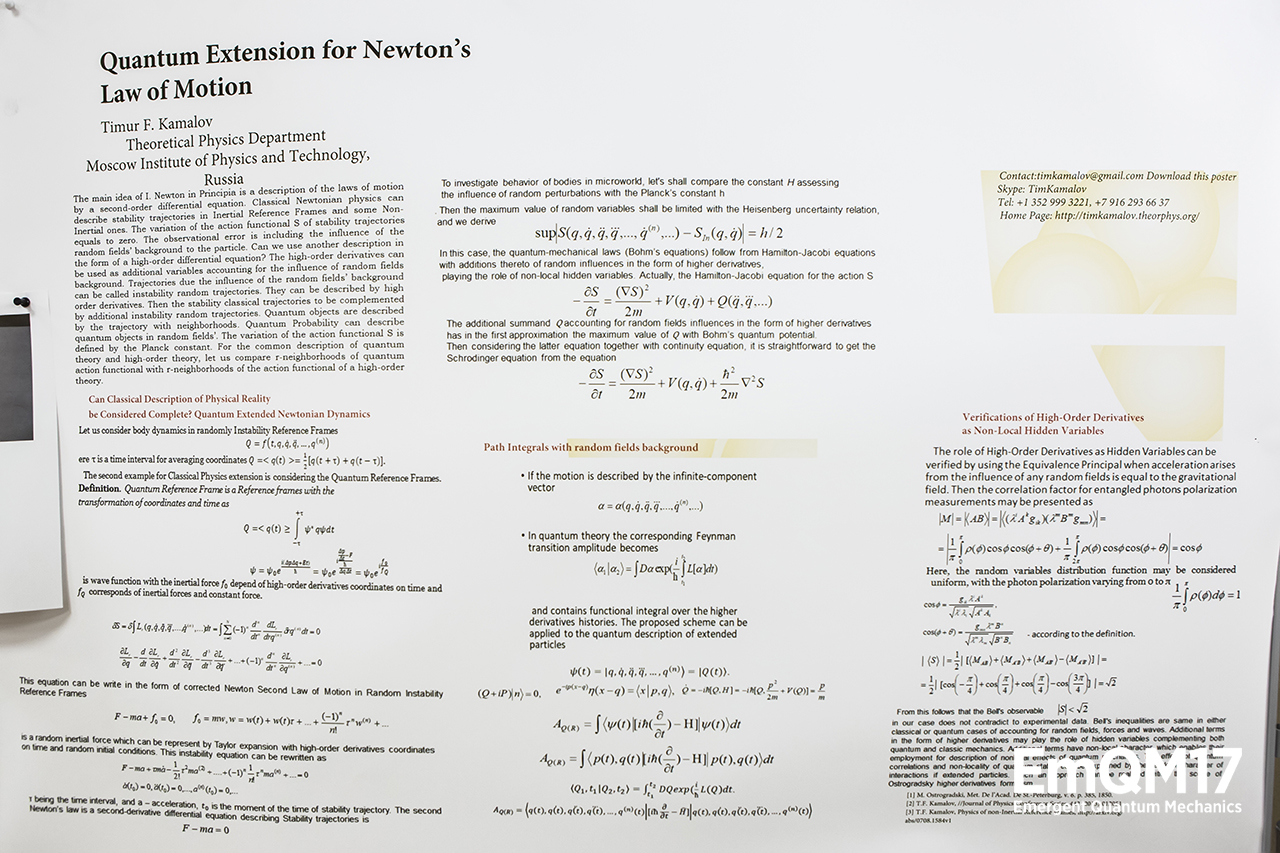Timur Kamalov
Quantum Extension for Newton’s Law of Motion
The most idea of I. Newton in Principia – is a law of Nature descriptions by second-order differential equation. Classical Newtonian Physics can describe steady trajectories in Inertial Reference Frames and some kind of non-inertial ones. The variation of the action function S of steady trajectories is equal to the zero. The influence of the random fields’ background to steady trajectories of the particle includes to the observational error. Can be use a different description in the form of High-Order differential equation? Yes, the High-Order derivative can be use as addition variables due of the random fields’ background influence. Trajectories due the influence of the random fields’ background can be name as unsteady random trajectories. They can be describe by high order derivatives variables. Then steady classical trajectories to be completes additional unsteady random trajectories. The variation of the action function S defines by the r-neighborhoods of the unsteady random trajectories. What about Unsteady Neighborhoods in Quantum Theory? Quantum objects describes by the trajectory with neighborhoods. Quantum Probability can to describe quantum objects in random fields’. The variation of the action function S is defines by the Planck constant. For the common description Quantum Theory and High-Order Theory, let us compare r-neighborhoods of quantum action function with r-neighborhoods of action function of High-Order derivative theory.
Reference:
https://arxiv.org/abs/1612.06712



